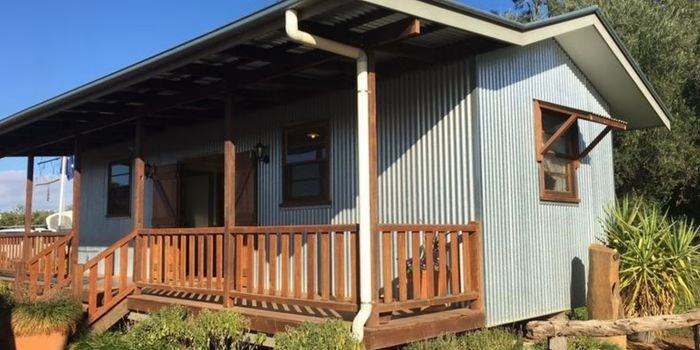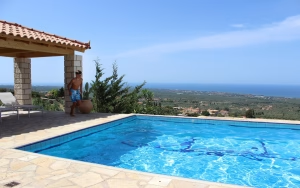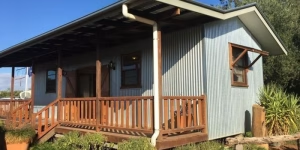Wondering about the cost to build a Mabati house in Kenya? Discover the estimated expenses, materials, labor costs, and budgeting tips for constructing an affordable steel-sheet home.
Introduction
Mabati houses are becoming increasingly popular in Kenya due to their affordability, durability, and quick construction time. These homes, made from corrugated iron sheets (mabati), offer a cost-effective solution for people looking for low-budget housing.
But how much does it actually cost to build a Mabati house in Kenya? The price varies depending on factors such as house size, design, material quality, labor costs, and location.
In this article, we break down all the expenses associated with building a Mabati house, from foundation to roofing, to help you budget effectively.
Why Choose a Mabati House?
Mabati houses are a preferred choice for many Kenyans for the following reasons:
✅ Affordability – They cost significantly less than brick or stone houses.
✅ Quick Construction – A simple Mabati house can be built in a matter of days.
✅ Durability – High-quality mabati sheets can last for decades with proper maintenance.
✅ Low Maintenance – Unlike wooden houses, they do not require frequent repainting or termite treatment.
✅ Portability – Some designs allow for easy dismantling and relocation.
Cost Breakdown of Building a Mabati House in Kenya
The cost to build a Mabati house in Kenya depends on several factors, including:
-
Size of the house – A one-room house is cheaper than a two-bedroom house.
-
Quality of materials – Premium mabati sheets cost more but last longer.
-
Design complexity – More intricate designs require more materials and labor.
-
Location – Transporting materials to remote areas increases costs.
Below is a cost estimate for building a basic one-bedroom and two-bedroom Mabati house.
1. Cost of Materials
(a) Mabati Sheets for Walls & Roof
Mabati sheets are the primary building material for walls and roofing. There are different types available:
-
Ordinary corrugated iron sheets – Ksh 500 to Ksh 700 per sheet
-
Box profile mabati – Ksh 800 to Ksh 1,000 per sheet
-
Colored or gauge 30 mabati – Ksh 900 to Ksh 1,300 per sheet
The number of sheets needed depends on the size of the house.
| House Size | Approx. Mabati Sheets Required | Estimated Cost (Ksh) |
|---|---|---|
| One-room (10×10 ft) | 20 – 25 sheets | 10,000 – 20,000 |
| One-bedroom (20×20 ft) | 40 – 50 sheets | 20,000 – 50,000 |
| Two-bedroom (30×30 ft) | 60 – 80 sheets | 30,000 – 80,000 |
(b) Structural Framework (Timber or Steel)
Mabati sheets need support structures, which can be made from timber or steel.
-
Timber framework – Ksh 15,000 to Ksh 30,000
-
Steel framework – Ksh 30,000 to Ksh 60,000
Steel is more durable, but timber is cheaper and easier to install.
(c) Flooring
Most people opt for cement flooring, but you can also use tiles for a modern look.
-
Cement flooring – Ksh 10,000 to Ksh 30,000
-
Tiled flooring – Ksh 30,000+
(d) Windows & Doors
A basic Mabati house requires at least 2 windows and 1 door.
-
Steel doors – Ksh 6,000 to Ksh 15,000 each
-
Wooden doors – Ksh 5,000 to Ksh 10,000 each
-
Steel windows – Ksh 3,000 to Ksh 7,000 each
(e) Roofing Nails & Accessories
These small expenses add up and should be included in the budget.
-
Roofing nails – Ksh 1,000 – Ksh 3,000
-
Paint for mabati (optional) – Ksh 5,000 – Ksh 15,000
-
Insulation material (optional) – Ksh 10,000 – Ksh 30,000
2. Labor Costs
The cost of labor depends on the complexity of the structure and the contractor’s rates.
-
Basic Mabati house construction – Ksh 20,000 to Ksh 50,000
-
Advanced design with partitions & ceiling – Ksh 50,000 to Ksh 100,000
Hiring an experienced fundi (mason/carpenter) ensures quality work and durability.
3. Additional Costs
-
Transport of materials – Ksh 5,000 – Ksh 20,000 (varies by location)
-
Water & electricity connection – Ksh 10,000 – Ksh 30,000
-
Furniture & interior finishing – Ksh 20,000 – Ksh 100,000 (optional)
Total Estimated Cost to Build a Mabati House in Kenya
| House Type | Estimated Cost (Ksh) |
|---|---|
| Simple One-Room | 50,000 – 100,000 |
| One-Bedroom | 100,000 – 250,000 |
| Two-Bedroom | 200,000 – 500,000 |
These figures are estimates and may vary based on material prices, labor rates, and customization.
How to Reduce Costs When Building a Mabati House
💰 Buy materials in bulk – You can negotiate discounts when purchasing in large quantities.
💰 Choose budget-friendly materials – Opt for affordable but durable mabati sheets.
💰 Use locally available materials – Reduce transport costs by sourcing materials nearby.
💰 Do some work yourself – Simple tasks like painting and flooring can be DIY.
💰 Hire skilled but affordable labor – Compare contractor quotes before hiring.
Pros and Cons of a Mabati House
✅ Pros
✔ Affordable to build and maintain
✔ Quick construction time
✔ Suitable for different climates
✔ Can be expanded or modified easily
❌ Cons
✖ Can get very hot inside (requires insulation)
✖ Prone to rust if not well-maintained
✖ Noise from rain if not soundproofed
FAQs on Cost to Build a Mabati House in Kenya
1. Can a Mabati house be permanent?
Yes! With a strong foundation, insulation, and proper maintenance, a Mabati house can last for decades.
2. How do I make a Mabati house cooler?
Use insulation materials, install ventilation, and paint the roof with reflective colors.
3. Is a Mabati house cheaper than a stone house?
Yes, it costs 50-70% less than a traditional stone house.
4. Can I install tiles in a Mabati house?
Yes, you can add cement flooring and lay tiles for a modern touch.
5. Where can I buy affordable Mabati sheets in Kenya?
Check local hardware stores, Mabati Rolling Mills, or online sellers for competitive prices.
Related: Best Roofing Mabati Companies in Kenya
Final Thoughts on Cost to Build a Mabati House in Kenya
A Mabati house is an excellent choice for affordable and quick housing in Kenya. Whether you need a simple one-room home or a spacious two-bedroom design, careful budgeting ensures you get a durable and comfortable home.
By considering factors like material quality, labor costs, and insulation, you can build a cost-effective and livable Mabati house without breaking the bank!





